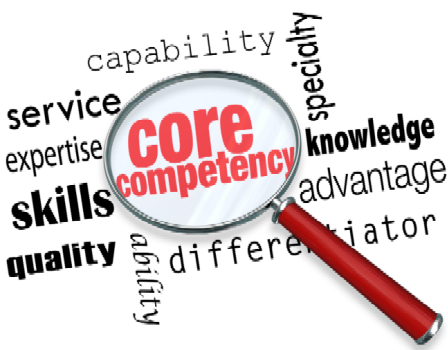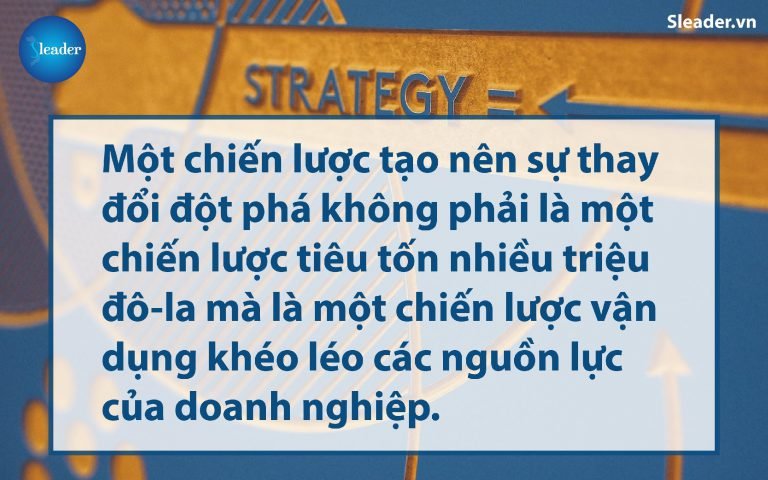
Difference is at the heart of strategy
What is the strategy? Why does the strategy need to be different?
Starting from the military, strategy is understood as the strategy of this side to find the opponent\’s weaknesses, leading the opponent into a position in his favor to crush the opponent. In business, strategy is how to outperform competitors on various factors such as technology, product, marketing, price, and resources. Although there are many different definitions of strategy, by nature every strategy is generally a means of making change – it includes what lies in the distance between intent (purpose) and outcome. results, or between expected capacity and achieved reality. The key trend and function of every strategy is development.
However, the strategy has no model because it is the separate path of each organization or enterprise. Although businesses operating in the same market segment, the same industry, but will have different goals, different resources and strengths. The strategy is based on analyzing strengths, weaknesses, assessing resources and potential, and will have to find separate solutions for businesses to find a position in a fiercely competitive capital market.

It would be a mistake for a business\’ strategy to imitate or chase after its competitors, whether it is an effort to make its products and services better, and run the business more efficiently. Professor M. Porter (Professor of Harvard University and famous for his research on competitive strategy) warned about the situation of copying and imitation due to misunderstanding the nature of strategy. Strategy, he argues, is not merely about practicing efficiency, but achieving efficiency by being different. Strategy practice cannot narrow down on operational efficiency, but the basic problem of strategy is “think deeply” and “see through“. Randomness is often perceived as “luck” only playing a minor role. “Do the right things” is far more important than “doing things right“. That means businesses must choose their own path, a different strategy from competitors in the market. Thus, the strategy to return to its original true meaning is the “strategy” to outperform the competition. In other words, the focus of strategy must be differentiation.

How to make a difference in strategy?
When the car was first introduced in Japan in 1907, the car industry in the West took shape for almost 100 years. The wave of Toyota, Honda, Hyundai, Suzuki in the years 1970-1980 made Western car manufacturers lose food and sleep. What makes such multidisciplinary businesses so flexible? According to C.K Prahalad and Gary Hamel: “Western businesses have responded more slowly than Japanese firms. Not because of inferior capacity and technology, but because Western managers lack the vision to deeply exploit the company\’s core competencies ”. When car production technology is no longer a secret, German, French, and Italian car companies no longer have a competitive advantage. Japanese carmakers have dominated the market with their ability to design and produce engines with outstanding durability and fuel economy. They shifted their efforts away from areas they found weak, and focused on strong areas to dominate the market quickly. That is the result based on core competencies that Japanese and Korean businesses have made continuous efforts for decades. The 21st century with the world transition is witnessing a similar wave in the battle between Apple and Samsung, showing that only core competencies can be brought to a sustainable competitive advantage.

Core competencies of an enterprise are understood as the ability to do things that competitors cannot do or do not as well. Core competencies can be technological know-how, management skills, close relationships with customers or suppliers … Literally speaking, core competencies such as forte are strong points of business. forming a value chain and creating competitive advantages for businesses. Depending on the direction of development and business lines, each enterprise has its own core competencies to differentiate itself from other competitors and create a certain position of the business in the market.
A business can have many capabilities, but core competencies must deliver value and strongly influence customer choice; must be something that the opponent cannot or is difficult to imitate and be able to widely apply. Intel\’s core competencies, for example, are focused on sophisticated and automated manufacturing technology; Sony is a manufacture of micro parts and products; Walmart supermarket system has the core competency of effective logistic management while Amazon establishes the core competency as customer database. In general, the core competencies are at the heart of the strategy, the competitiveness and the ability to make profits of the business.

In strategic management, strategic objectives, strategic actions and resource allocation are the three basic components. Defining goals, finding ways (based on core competencies) is very important, but if you do not know how to allocate resources wisely, the business cannot implement the strategy or if it does. well, it does not bring much competitive value, leading to failure against the opponent. Vietnam\’s military history has summarized one of Vietnam\’s art of war, “taking more or less enemy, weak against strong” – that is a wise and creative way of distributing resources.
Similarly, each business will have different resources and at different times need to know how to use the appropriate resources to achieve the highest value and competitive advantage. A disruptive change strategy is not a multi-million dollar strategy, but a skillful use of the company\’s resources. Only then can that strategy make a difference.
As Michael Porter puts it: “A company without a strategy is willing to try anything.” This is also a common problem in many Vietnamese enterprises, especially small and medium enterprises. Most of the businesses are spontaneous, follow the movement, and run according to the current needs of the market. Very few businesses look far, carefully to go ahead with the trend, to make a difference. Therefore, it is understandable when the rate of businesses shutting down in 2018 (without Covid-19 translation) increased to 50% (91,000 enterprises). In a sense, the last Covid-19 pandemic is an opportunity for Vietnamese businesses to look back on their core capabilities and prepare to prepare for a longer and more sustainable journey.
Source: Institute of Strategic Leadership (SLEADER)



